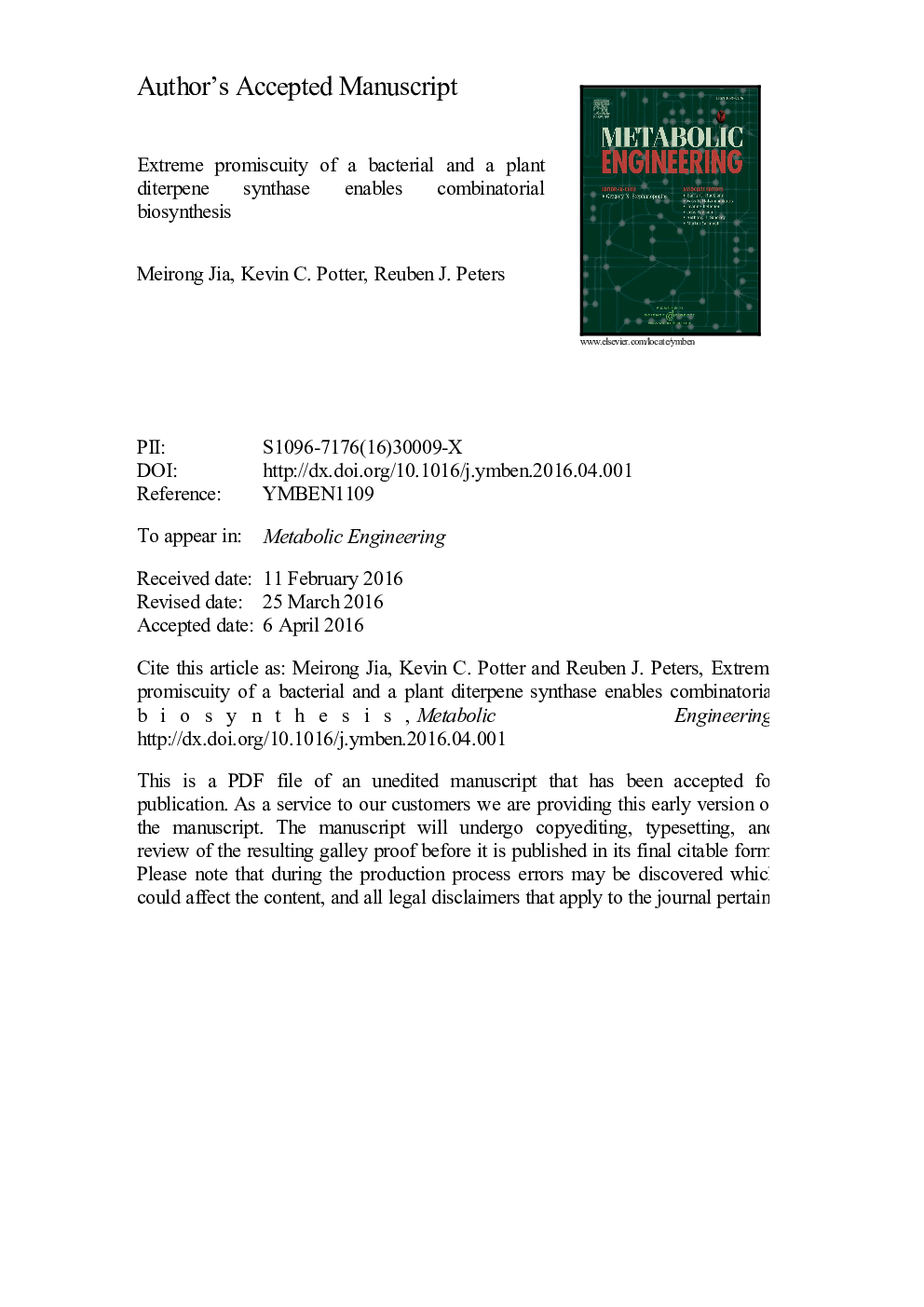| Article ID | Journal | Published Year | Pages | File Type |
|---|---|---|---|---|
| 6494237 | Metabolic Engineering | 2016 | 36 Pages |
Abstract
Diterpenes are widely distributed across many biological kingdoms, where they serve a diverse range of physiological functions, and some have significant industrial utility. Their biosynthesis involves class I diterpene synthases (DTSs), whose activity can be preceded by that of class II diterpene cyclases (DTCs). Here, a modular metabolic engineering system was used to examine the promiscuity of DTSs. Strikingly, both a bacterial and plant DTS were found to exhibit extreme promiscuity, reacting with all available precursors with orthogonal activity, producing an olefin or hydroxyl group, respectively. Such DTS promiscuity enables combinatorial biosynthesis, with remarkably high yields for these unoptimized non-native enzymatic combinations (up to 15Â mg/L). Indeed, it was possible to readily characterize the 13 unknown products. Notably, 16 of the observed diterpenes were previously inaccessible, and these results provide biosynthetic routes that are further expected to enable assembly of more extended pathways to produce additionally elaborated 'non-natural' diterpenoids.
Keywords
Related Topics
Physical Sciences and Engineering
Chemical Engineering
Bioengineering
Authors
Meirong Jia, Kevin C. Potter, Reuben J. Peters,
